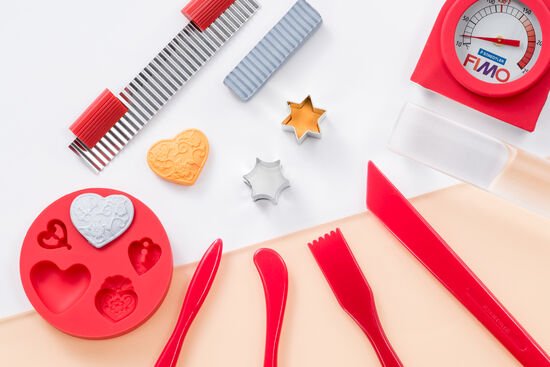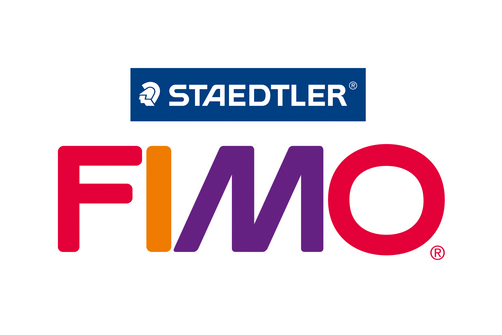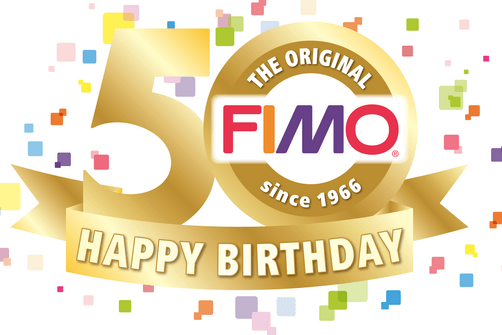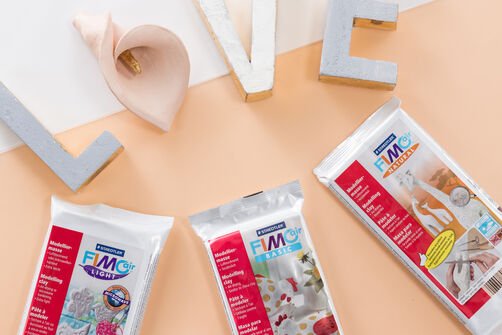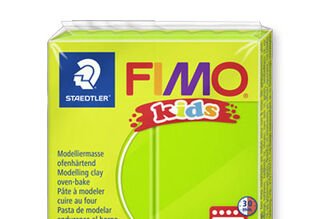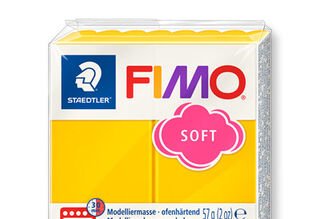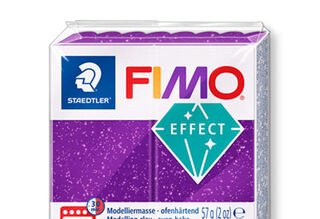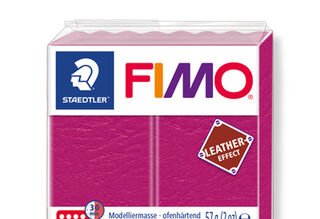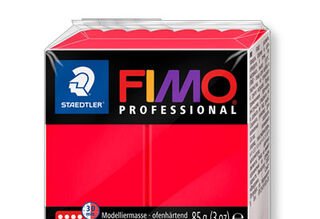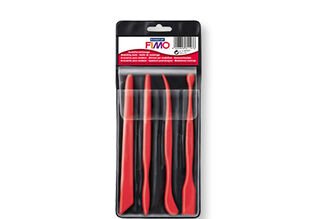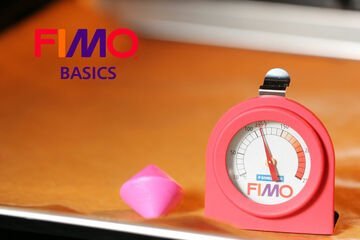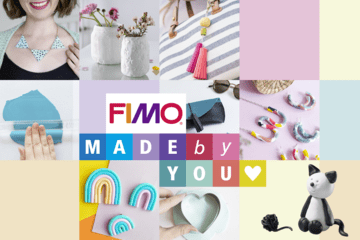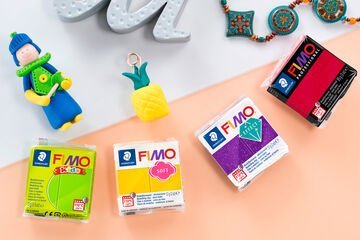What is FIMO actually? Everything you need to know about the popular, colourful modelling clay from STAEDTLER

Users often talk about “FIMO dough for kids” or “FIMO playdough for kids” – but FIMO is a modelling clay. FIMO modelling clay is a well-known and popular choice for children, amateur artists, DIY crafters and professional users of all ages. But what is FIMO and why is this modelling clay so popular? In the following, we will explain where FIMO comes from and what the material is made of. We will also reveal the special product qualities that characterize this versatile clay.
A brief history of FIMO modelling clay
What is FIMO actually made of? Production and composition of the material
So what is FIMO actually? And what is the modelling clay actually made of?
Oven-hardening modelling clay
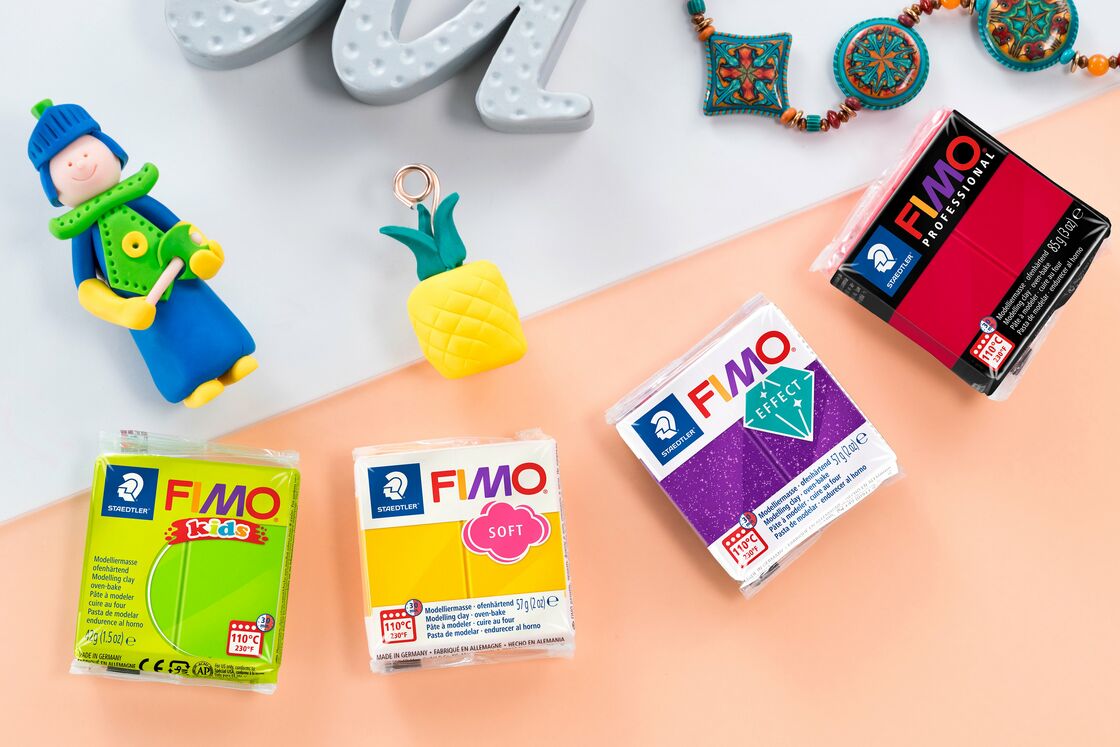
For reasons of preventive consumer protection, STAEDTLER has avoided the use of phthalate-based plasticizers in FIMO oven-hardening modelling clay since 2006. Oven-hardening FIMO modelling clay is made of:
- Plastic powder (PVC)
- Plasticizer
- Additive
When hardening in the oven, the plastic powder contained in FIMO sets and forms a firm solid after cooling. Compared to “normal” modelling clay, the material is significantly firmer. The structure of FIMO professional, for instance, makes it possible to model small and finely detailed objects. The wide variety of colours available for the product are created by adding various bright colour pigments to the modelling clay.
Air-drying modelling clay
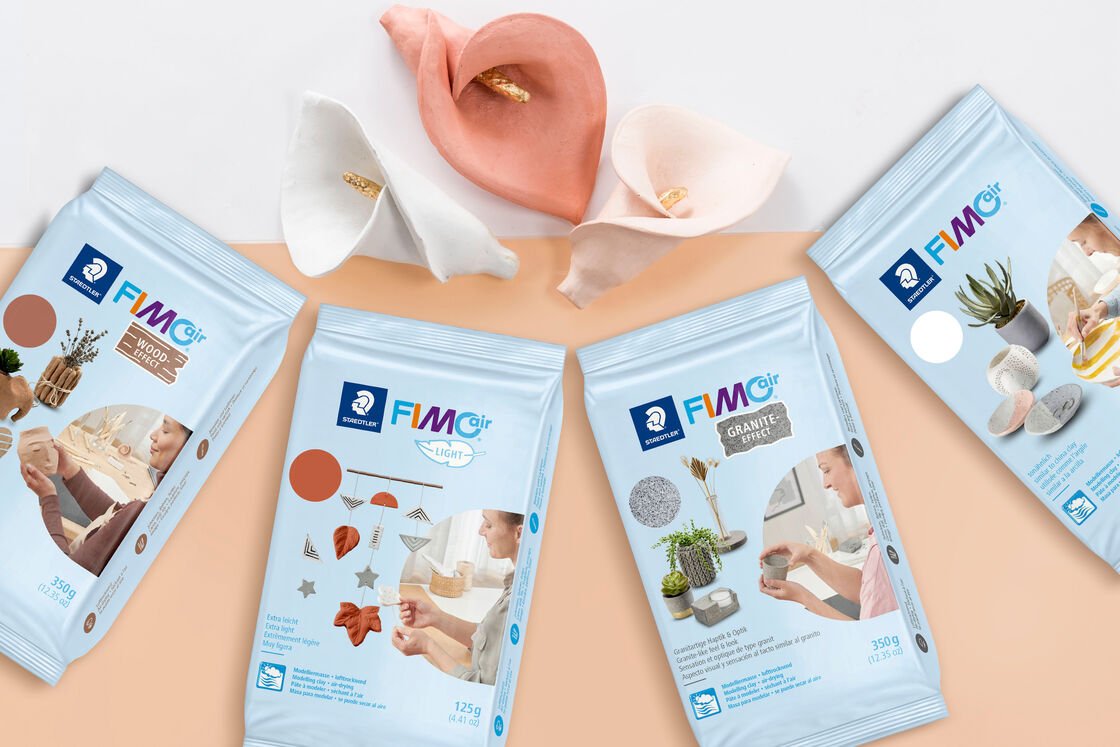
The ingredients of FIMOair are the following:
- Kaolin (basic, natural)
- Water
- Additive
What is FIMO? General information about the oven-hardening product
- FIMO can be hardened in the oven at 110 degrees Celsius. The maximum temperature should not exceed 130 degrees. (Exception: FIMO leather-effect must be hardened for 30 minutes at 130° C / 266° F!)
- Already hardened FIMO elements can be placed in the oven again when applying techniques that require multiple hardening processes.
- All oven-hardening FIMO types are mixable with one another. (Where a piece includes FIMO leather-effect, the blend should be hardened for 30 minutes at 130° C / 266° F. Combining FIMO leather-effect with other FIMO clays (FIMO soft, effect or professional) will decrease the leather look in proportion to the quantity of other clays.)
- The hardened modelling clay can be varnished with special FIMO lacquers and painted with suitable pens or with suitable plasticiser-resistant acrylic and oil paints.
- FIMO can be sanded and polished.
- Holes for FIMO jewellery and beads can either be made with a needle before hardening or drilled with a hand drill after hardening.
- Broken FIMO parts can be easily attached again using super glue.
- If you would like to produce arched FIMO elements, oven-proof moulds can be used to support the material.
- FIMO should only be washed by hand, not in dishwashers, since dishwashing liquid is too aggressive and can harm the material.
- To ensure that opened FIMO blocks don’t collect dirt or dust, we recommend storing them in aluminium foil or PE bags in a cool and dry place. Avoid contact with polystyrene, PVC and styrofoam.
- FIMO that has become too hard can be kneaded until soft again using Mix Quick softener.
What is FIMOair? General information about the air-drying product
- In contrast to FIMO, FIMOair dries in the air.
- FIMOair is an ideal choice for art, spare time and hobbies as well as for pedagogical purposes in schools, kindergartens and similar institutions
- Packaging in film prevents the clay from drying out
- Hardened models (basic & clay) can be finished (filing, polishing, drilling, painting, varnishing)
- Hardened models (light) can be finished (painting, varnishing)
- FIMOair is ready for immediate use
Uses and many valuable characteristics at a glance
FIMO modelling clay comes in oven-hardening and air-drying varieties:
Oven-hardening FIMO types
- FIMO kids
- FIMO soft
- FIMO effect
- FIMO leather-effect
- FIMO professional
- FIMO professional doll art
Air-drying materials
All FIMOair types:
- FIMOair basic
- FIMOair natural
- FIMOair light
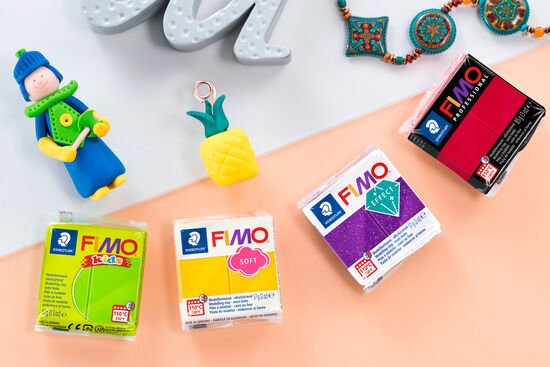
Thanks to the many different varieties of FIMO modelling clay, there are suitable products for every use and all age groups:
- Children
- Beginners
- Amateur artists
- DIY hobbyists
- Jewellery designers
- Professionals in the field of applied arts
These clays are not just ideal for art, spare time and hobbies, but also for teaching purposes for crafting in kindergartens or schools. Not only do they encourage children to develop creativity and imagination, but also their spatial reasoning and fine motor skills. You can learn which specific products are suited for each field of use in our guidebook about the various FIMO types.
Anyone can be creative with FIMO and model impressive home decorations, beautiful gifts or enchanting unique pieces in the blink of an eye. These popular, versatile modelling clays are perfect for these uses thanks to their many high-quality product characteristics.
In addition to the popular FIMO modelling clay, there is a comprehensive selection of fantastic FIMO accessory items. These can be used to decorate and refine individual FIMO artworks.
Many inspiring tutorials on working with FIMO can be found in our Discovery Area.
